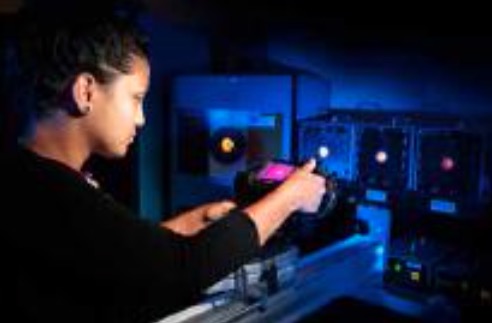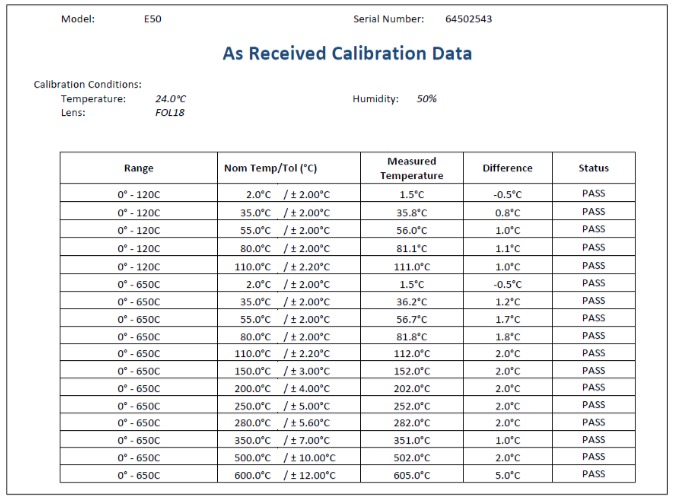Ed Kochanek
Eastern Region Sales Director, Test
FLIR Systems, Inc.
22 Overlook DriveWoolwich, NJ 08085Ph: 866-379-4022 www.flir.comAbstract
You’ve spent all your time trying to figure out which camera is best for you. You’ve considered all the features including number of pixels, sensitivity, and connectivity to mobile devices. You’ve made your decision, bought, and received the camera. Is that the end of the decisions you will have to make? Of course not. There are many choices that you should consider as soon you get your camera because ignoring them can cost you in the long run.
This paper will discuss what you should do next and how to plan for the future with your latest investment.
Register Your Camera
Congratulations, you just received your brand new thermal imaging camera and your excitement level is really high. Before you turn your camera on, please be sure to take some important steps to protect your investment for years to come.
The first thing you need to do is register your camera.
I know I’m guilty of foregoing this important step with most of the electronics that I purchase. I do not want the inevitable junk mail or the annoying phone calls that happen once I have given out my phone number or other personal information. However, the benefits of registering your thermal camera will outweigh any of these concerns.
If it’s a FLIR camera, we’ve made this process easy. We have provided a sticker on the LCD screen which gives clear instructions on how to register the camera via the internet.
First of all, many camera extended warranties can only be activated if you registered your camera. This is very important. You don’t want to get a surprise bill if there is a problem with your camera in the second year. You purchased a camera with an advertised second year warranty so make sure you take advantage of it.
By registering your camera the manufacturer knows who owns that serial number. If your camera is lost or stolen, you can inform the manufacturer that the camera is missing. Sometimes missing cameras come back for service and are flagged and sent back to the original owner.
Another benefit of registering your camera is that you will receive notice of any firmware updates. Firmware is the software that is your camera’s operating system. At FLIR, we continue to improve our products and we provide notification of these improvements to owners who have registered their camera. If you don’t register your camera, we have no idea who you are. New features are included in these updates. This makes updates faster when you don’t have to send your camera into service.
Lastly, registering is the best way to stay in touch with the manufacturer. When we come out with a new product or announcement and you are registered, we can get the message out to you. This can be an issue if you get too many emails or spam. If this does become too much of an issue you can always unsubscribe from email notification.
Orientation
Now that you have registered your camera it’s time to play with it! The problem is that the manual is a .pdf on a DVD and the hard copy quick start document is not fully descriptive. Printing out the manual can use up a lot of paper and ink. You call your sales person who is more than likely a distributor and doesn’t have a firm understanding of how to operate your camera. What do you do?
If you have some infrared experience, you can try to work your way though it with trial and error; however, this is time consuming and frustrating. If you have no experience, errors will occur and you many not fully embrace the camera’s technology. Well, there is a better way.
At FLIR we have created a self-paced internet tutorial for every camera we currently manufacture, in many different languages too. You can find it on the internet. Most tutorials last between an hour to an hour and half. If you get distracted by another task, no worries, it will remember where you left off. This makes it very user friendly and convenient to do when time permits. The tutorial walks you through every button on the camera and gives you the confidence to take the camera out and use it to its fullest capabilities. It even offers some education on temperature measurement.
Training
Using a thermal camera is easy. Understanding what the thermal camera is telling you is hard. There are many factors that go into creating an image and getting an accurate temperature measurement. To increase your success you should invest in getting certified. This is different than camera orientation which is camera model dependent. Certified training goes through the physics of infrared and gives you the foundation to understand how the camera works. This allows you to make accurate temperature measurements and get the best picture possible.
Depending on what type of work you plan to do, you may be required to get Level 1 or 2 certification. If you haven’t done it already, you might as well do it after you get your camera.
In my opinion, getting training after you have your camera for a couple of months is best. The reason is that once you have experienced using the camera for a while, you can then walk into the training with any questions that come up. It’s better to know where you are missing information so training can help fill in the gaps in your education.
Training will give you the confidence to use the technology to its fullest extent. This will improve the return on investment and make you more valuable to your company or your own business.
Software
All manufacturers include software to create reports for you to use with your camera. Software programs range from the really good, that have archiving features, to very basic. There is even third party software in which software companies have created detailed reporting and archiving systems using the infrared image. These companies have received the approval and licensing from camera manufacturers to use their images in the customer software solution. You can even find software programs that collect data from vibration, ultrasound, and other predictive solutions and combine them into one database.
You should spend significant time learning all the features of your software. The more you know, the more efficient you will be in creating reports. Many cameras and software programs are designed together to reduce the time it takes to create the report and learn the software.
Software is there to make you look good. It’s designed to enhance the images you take and share your findings in reports. Images can be manipulated for contrast and temperature once they are in software. All you have to do is make sure the image is in focus and you have the correct temperature range selected.
Reports are very important as they are a way to share what you have found and describe the problem for other people in your organization to review. Reports also help justify camera purchases and provide the return on investment document when you discover the problems. Spotting trends and recurring problems are other advantages of reporting.
Some software programs give you the ability to customize the reports to your company’s needs, applications, or image archiving. For instance, you may have a report for an electrical problem, mechanical problem, or building application. The customization gives you the ability to highlight the special needs of these applications so you can tell your story to anyone not as familiar with a thermal image as you are.
Extended Warranties
Thermal cameras have very few moving parts. Reliability has gone up over the years compared to the cooled cameras of the 1990’s. In fact, some warranties go out to 10 years on the detector. Longer warranties indicate the confidence of the manufacturers in their product.
However, longer warranties do not mean your camera should be considered maintenance free. If you are thinking about your operating costs in future years, you should consider an extended warranty.
An extended warranty will guarantee your cost of operation over the period of time that you choose. Most cameras come with a two year warranty. If you want to extend that to a third, fourth, or fifth year you should do so as soon as you get your camera. It’s usually more affordable to purchase an extended warranty when the camera is brand new.
In addition, several of the warranty packages include calibration. If you plan on calibrating your camera consistently, an extended warranty with calibration is an economical way to do it, as some manufacturers offer a discount when purchased together.
Another benefit of an extended warranty package is “priority service”. When your camera is not working, you need it back as soon as possible and some extended warranties will get you to the front of the line where turnaround time can be as little as three days.
Calibration
All cameras come calibrated for accurate temperature measurement and thermal imaging. Cameras that are routinely calibrated are highly reliable in spotting thermal anomalies and other temperature phenomena. Camera manufacturers usually recommend having their cameras calibrated between every 1 to 2 years.
The calibration lab is very simple. It has a series of blackbodies that the camera stares at and the temperature is recorded.

Sometimes customers need additional information for their own internal records – a simple certificate stating when the calibration was done is not enough. Here is an example of the report created when customers need to see the temperature data.

When you have a problem with your camera you should call the service department of the company from which you purchased the camera. Many companies have separate phone numbers for their service departments.
At FLIR, we have a separate phone number for our thermography service department. If you have a FLIR thermal camera and you need service, please call 866-FLIR-911 #2. This will go to the correct people who will handle your camera. This is also the phone number to call for additional batteries, lenses, and upgrades.
Life Expectancy
I get this question a lot. It depends on how you use your camera. If you plan on being rough, and treating it like a rental car, hopefully you purchased a durable camera. Many cameras have drop test ratings. Some thermal instruments can withstand a 10’ drop. However, if you treat your camera like you do your own personal car, then you can expect over 10 years of life on your camera. When I started in the business 16 years ago, I was taking trade-in requests on cameras manufactured prior to 1990. Today, I am taking trade in requests for cameras I sold prior to 2002, which is over 13 years ago. That’s an impressively long time for an instrument being used in industrial environments every day.
Conclusion
Thermal cameras are a great tool and a great investment. They are able to see a problem before it happens, thereby saving you time and money. Spending a little time making these key decisions will help provide a lifetime of service and support and get the most out of your investment.
So remember, register your camera, consider an extended warranty, and get certified training.



